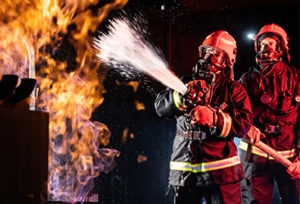
Survitec streamlines ship safety supply chain

Marine safety provider, Survitec, has launched a new service for the marine industry that it says will streamline the supply chain process for critical firefighting and other lifesaving products.
The company says the new service, called Survitec Essentials, addresses the need for marine operators to have reliable and convenient access to essential safety products at major maritime hubs around the world.
“This is a completely new approach for the commercial maritime industry,” says Finn Lende-Harung, Survitec product category manager – fire. “Survitec Essentials offers a consistent range of quality safety products at a fixed price at key ports along the global trading routes.
“This makes it easier for ship managers to budget and plan ahead. For the crew, it simplifies the training, service, and spare parts regime. With Survitec Essentials, we have addressed the ship managers’ supply chain challenges and worked to simplify them.
“With a fixed price arrangement across 12 key ports, ship managers no longer need to worry about exchange rates, quotes on a case-by-case basis, or multi-currency transactions.”
The ports include London, Hamburg, Rotterdam, Algeciras, Piraeus, Colon, Barcelona, Houston, Fujairah, Shanghai, Singapore and Busan.
Addressing the procurement challenges ship operators and crews currently face, Survitec technical sales manager, Wim van Iperen, comments: “You can go onboard a ship and find several brands providing different versions of the same piece of kit, different versions of the same spares and accessories, and different manuals and instructions, possibly in several languages. Crews need to match all of these elements when they come to maintain, service or use the equipment. This not only increases stock inventories onboard, but can be confusing, time consuming and complicated for crews.
“Now, with the Survitec Essentials range of more than 70 essential safety products, including spares and accessories, operators can be assured of having the products they need, where they need them, to stay safe and compliant, whilst also removing unnecessary complexities surrounding the management of safety equipment onboard.”
The same model applies for operators out of other countries, including the US, Germany, Korea, UAE, and Norway.
